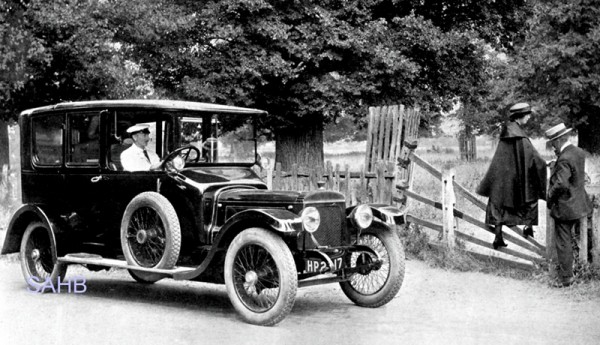
The Warwickshire countryside and the picturesque villages therein were very popular locations with the Coventry car-makers when they wanted to have publicity photographs taken and Daimler were no strangers to this practice. Although because of the parallel bonnet this car is almost indistinguishable from its pre-War forebears, the registration indicates that it is probably either one of the 4-cylinder 20hp models that were introduced in mid-1921, or a 6-cylinder Light Thirty. Whichever it is, beneath the bonnet is a smooth-running Knight-pattern double sleeve-valve engine that had become as much of a hallmark of Daimler cars as the distinctive radiator.
As for where we are, that is actually easier. It is at Charlecote Park, some 4 miles to the east of Stratford-upon-Avon. The legend is that it was in this parkland that a young man called William Shakespeare went poaching. The location is identifiable because three or four years later Rover had one of its cars photographed in precisely the same place, and this was named in the caption when the picture was reproduced in The Wonder Book of Motors, a well-illustrated volume that was first published in 1926 and aimed at younger readers.
Apart from the mature oak trees, the key feature in both pictures is the clapper stile, the working of which the young lady is here demonstrating. This example and a few others survive in different parts of the country and they are reputed to derive their name from the fact that when the pressure on the rails is released the blocks at the end fall in sequence and it briefly sounds like clapping.
In a moment of flippancy it could be suggested that the chauffeur, and the lady and gentleman, felt that a discreet round of applause would be an appropriate way to show their appreciation of the silent ticking-over of the Daimler’s engine.






